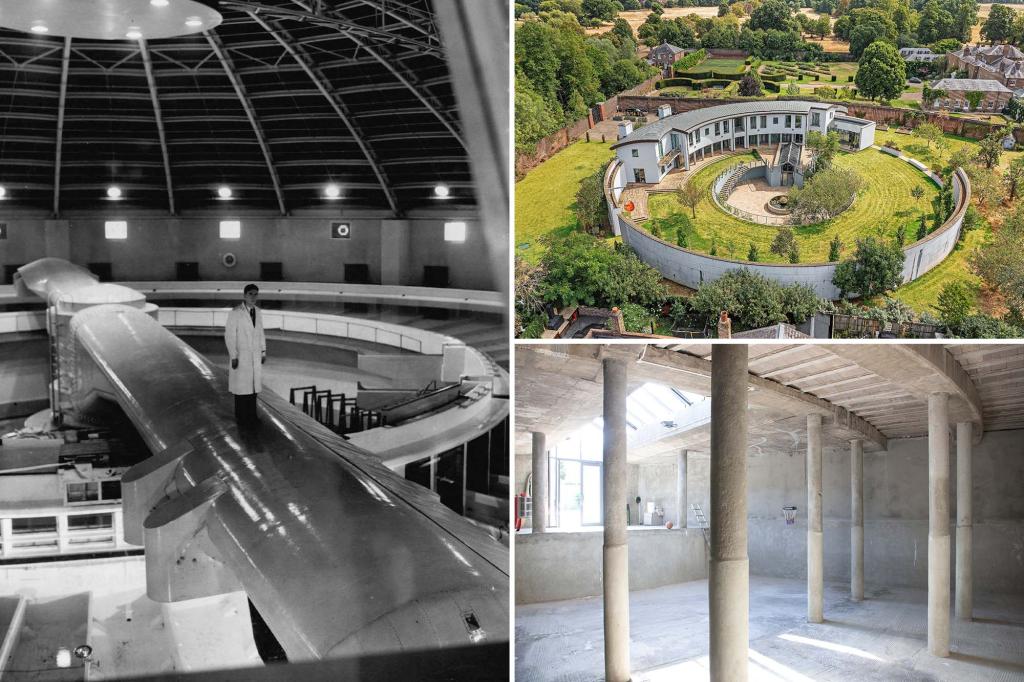This recently listed brutalist mansion comes with an explosive history.
The $10 million property in England resides in the footprint of a Cold War-era torpedo testing site.
The listing, held by Daniel Killick of Savills, was first reported by Mansion Global.
The two-story home makes up part of the blast-proof concrete wall encircling a sunken grassy courtyard, evoking a cross between ancient ruins and a lunar base.
A brutalist modern architectural firm, Norman & Dawbarn, was charged with transforming the historic building into a family residence in the early 2000s.
The resulting crescent-shaped, low-lying abode is light, airy and spacious.
A visitor to the property between the 1950s and 1993 would have been greeted with a far more imposing edifice. The former military testing site was built around a massive circular water tank measuring 151 feet across — about the size of an Olympic swimming pool — with a domed copper roof to deter spies.
Norman & Dawbarn made ample use of materials like concrete, aluminum and copper, according to the brokerage, in an ode to the home’s former life. The firm’s brutalist style can be found in the property’s bold geometric lines, curved walls and utilitarian layout.
The first floor features a metallic kitchen and three reception rooms. The open floor plan is bathed in natural light from an abundance of large, rectangular glass windows. Curving metal staircases connect to the second floor, consisting of six bedrooms, all with ensuite bathrooms.
The 10,113-square-foot residence also features two subterranean levels that haven’t been resorted since the Cold War days, Killick told Mansion Global.
Raw remnants of the site, including a section of empty tank and winding tunnels, can be accessed through a basement door, according to a previous Daily Mail profile of the property.
“It is a privilege to bring this incredible home to market and to be involved with the sale of one of south west London’s most significant houses,” said Killick in a statement.
The 1.3-acre gated property also boasts a rare location. Just past the property’s red brick wall is the 1,100-acre Bushy Park, London’s second largest royal park.
